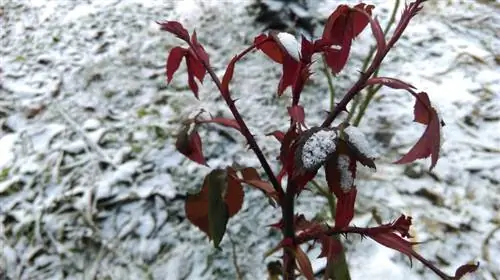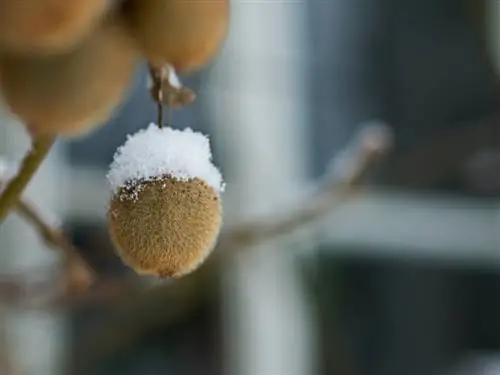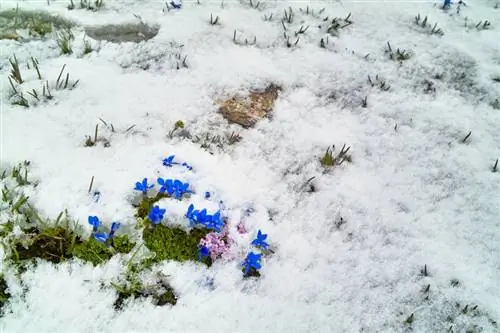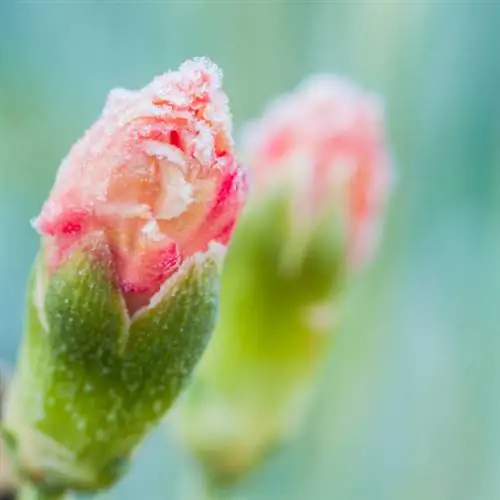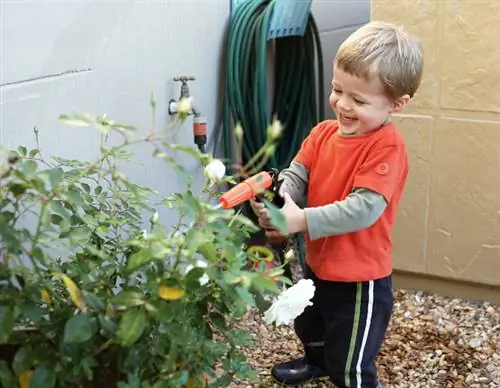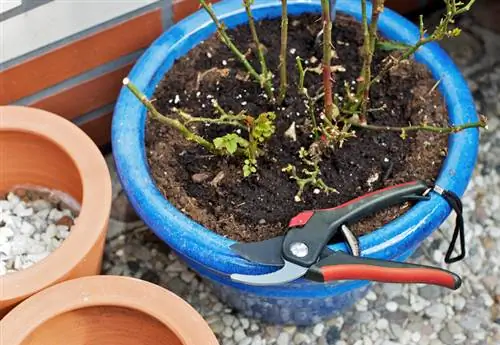- Author admin [email protected].
- Public 2023-12-16 16:46.
- Last modified 2025-01-23 11:20.
Winter protection, which is so important for roses, begins with the purchase and care: When purchasing, choose species and varieties that are as frost-hardy as possible and that are prepared for winter with the right preventive measures. It is particularly important to protect yourself from the winter sun in order to prevent sprouting too early.
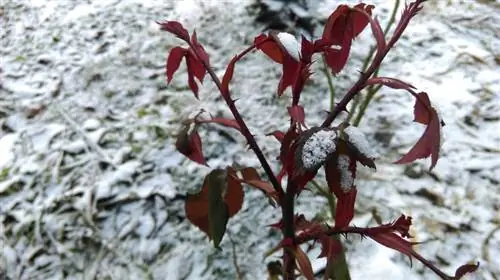
How to protect roses in winter?
To protect roses in winter, you should choose frost-hardy varieties, protect them from winter sun, pile up roots, cut back shoots, remove fallen leaves and use brushwood or frost protection fleece if necessary.
Protecting roses from the winter sun
Actually, our modern roses would bloom all year round if the cold and low-light winters didn't prevent them from doing so. Through the cross-breeding of multi-flowering roses from the warm regions of Asia, the flowers have inherited this ability, which breaks through again and again - recognizable, for example, in rose petals that appear in December in mild years or in the premature sprouting in warm weather in late winter. The price of the long flowering period is that these roses need more attention and special protection.
Protection from sun and cold
Not the frost and cold drying winds alone, but also the combination of intense sunlight during the day and sub-zero temperatures at night can be dangerous for roses. The transitions between frost and thaw in the months of January and February are particularly critical. Protect the roses with jute (€12.00 on Amazon), burlap, frost protection fleece or coniferous twigs, especially in areas with very cold winters. You should definitely pile up all noble roses and other roses that are not frost hardy as a precaution. This means that even in the event of frost damage, the eyes from which the rose can rebuild itself remain protected.
Native wild roses are better adapted to our climate
Native wild roses and single-flowering roses are better adapted to our climate and only sprout later. Therefore, they are less at risk and also require significantly less care.
Preparing for winter
Water all roses thoroughly again before the onset of frost. Collect fallen leaves to avoid fungal diseases: the fungal spores overwinter in them. Cut back long, thin shoots and remove any remaining flowers. Do not apply winter protection too early so that the shoots have time to mature. The right time for this is between mid-December and mid-January. Stick brushwood between the branches of climbing roses, shrub roses and floribunda roses. You can also cover the plants with jute.
Tip
Is the rose in front of a light wall and therefore sprouting too early? Protect them with fir branches or frost protection fleece.

